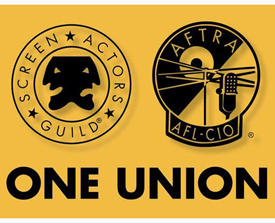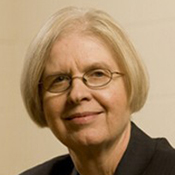After 80 years of merger talks and attempts,
the Screen Actors Guild (SAG) and the American Federation of Television and
Radio Artists (AFTRA) have officially merged.
The merger reflects a decades-long
debate within the entertainment and media labor community regarding which
strategy is better – having everyone in the same craft in separate unions, or
getting everyone in the entire industry into one union. SAG-AFTRA now encompasses over 150,000
performers and media professionals, including actors, broadcasters, DJs, and
recording and voiceover artists, among others.
Sue Schurman, acting dean of Rutgers’
School of Management and Labor Relations and lead facilitator for the merger
between SAG and AFTRA, discusses the impetus for and challenges of bringing
together two very different unions with very different cultures.
Rutgers Today: What has changed about the entertainment labor landscape since SAG and AFTRA's last merger attempt in 2003?
Schurman: Just about everything. There was once a difference between the big screen of movies and the
small screen of television – now there are screens everywhere showing digital
content. Ownership in the entertainment
industry is highly concentrated. A small number of conglomerates own virtually
all the networks and other content creation and distribution channels. These companies have learned to make more
money with fewer performers thanks to technology. There are growing numbers of skilled
non-union performers, not to mention the popularity of reality shows. When the basic conditions of an industry
change, workers and their organizations have to adapt.
Rutgers Today: The 2003 vote fell just 2% short of the required 60% majority approval by SAG members. This time, 82% of the over 55,000 SAG members who voted approved the merger. Why do you think SAG members had a change of heart?
Sue Schurman is acting dean of Rutgers' School of Management and Labor Relations. Schurman:
Rutgers Today: Super-union proposals often break down due to concerns that one
branch may dominate. Were such concerns unfounded in this context?
Schurman: SAG and AFTRA have both been weakened already by the changes in their
industry, and by fighting with each other instead of cooperating to bring workers
in the new media parts of the industry into their unions. Actors are the majority of the new union; they
will need to work hard to make sure other performer groups retain a strong
voice.
Rutgers Today: How long will it take to actually combine the organizations and what
does that entail?
Schurman: The real work of building a new and healthy culture within SAG-AFTRA
begins now. There will be a transition
period with co-presidents and a national board made up of the existing boards
of both unions. AFTRA local unions and
SAG branches will also go through a merger process. The new union will hold its first convention
and elect a new slate of officers in the fall of 2013. Much of the research on major organizational
change suggests that it takes at least five years – if it is managed well.
Media Contact: Amber E. Hopkins-Jenkins
(732) 932-7084, ext. 601
E-mail: aehopkinsjenkins@ur.rutgers.edu


